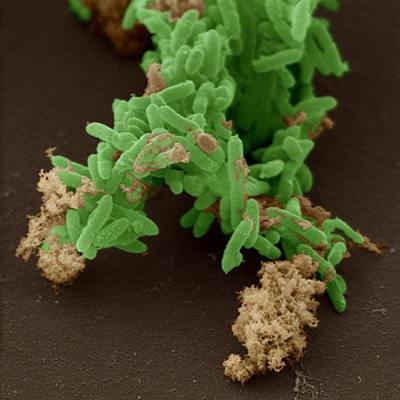
By now, we are pretty aware of what viruses are capable of. It is time, now, to turn the spotlight on bacteria. Bacteria are microscopic organisms that exist in every environment, both inside and outside organisms. They live on our skin, in our guts and in our mouth. They live with us throughout our life. Bacteria has been on the planet for more than 3.5 billion years, making them the oldest known life-form on Earth. They support plant and animal life and are used in industrial and medicinal industries. While most serve a purpose, some are harmful. Bad bacteria can spoil your food and water, making them unsafe. But don’t worry, of all the bacteria in the world, less than 1 % will make you sick.
Bacteria can live in extreme conditions and are capable of doing incredible things beneficial to humanity and the planet. Scientists have been uncovering fascinating abilities of bacteria. There are those that have the ability to generate biofuels, to purify water, to break down plastic, transform CO2 into proteins suitable for human consumption and those that can ‘ea? CO2 and thereby reduce greenhouse gas effects. Now, scientists have shown how Geobacter bacteria could not only survive exposure to toxic cobalt but also coat themselves with the metal – like the Iron Man putting on the suit. Scientists believe that this superpower could open the door for Geobacter’s application in environmental remediation, especially by removing toxic pollutants from the environment. In fact, Geobacter bacteria are capable of much more. Read on to know them.
What are Geobacter?
- Geobacter are a group of gram negative bacteria. They are rod-shaped and possess flagella and pili. Pili is a hair-like appendage found on the surface of many bacteria and archaea.
- They live in low-oxygen environments such as muddy soil, seabeds or along the banks of rivers.
- The first Geobacter species (Geobacter metallireducens) was isolated from the Potomac River, just downstream from Washington D.C. in 1987.
- Consequently, many species of Geobacter bacteria were discovered, with each having interesting properties.
- All Geobacter consume organic waste and give out electrons, generating electric current in the process.
Novel electron transfer capability
All creatures on Earth use electrons (yes, the negatively-charged particles) in a complex chain of chemical reactions to harness energy. Humans (and most other organisms) get the electrons from sugar in the food we eat and pass them onto the oxygen we breathe through our lungs. That flow of electrons is what powers our bodies. This chemical reaction may vary between organisms but they all have to find a source of electrons, and a place to dump them to complete the circuit.
Bacteria do not have lungs, nor do they ‘breathe’ in the sense we have come to understand. Geobacter bacteria get their electrons from organic matter. They pass these electrons to metals or minerals (instead of oxygen) in the environment, using protruding hair-like wires. For instance, Geobacter metallireducens, which has been studied extensively, get their electrons from organic compounds and pass them onto iron oxides. They also produce a small amount of electricity in the process using their nanowires.
Nanowires are special hair-like electrically conductive appendages that protrude from the cell’s surface (They are different from pili). Made of proteins with metal-like conductivity, these wires are 10,000 times smaller than the width of a human hair! Because of these nanowires, Geobacter metallireducens can be attached to an electrode to produce an electric current. The nanowires conduct electricity and could potentially be used as a sustainable electronic material. In fact, scientists see a future of recycled energy, in which such microbes can be used to power devices such as smartphones using waste as their only food source.
Fight against toxic chemicals
- Geobacter bacteria were the first organisms found to oxidise organic compounds to carbon dioxide. They can convert the organic compounds in oil spills into carbon dioxide, or turn soluble radioactive metals such as plutonium and uranium into insoluble forms that are less likely to contaminate groundwater. This property makes these bacteria useful for cleaning up water and soil that are polluted with oil or dean up sites that are contaminated with radioactive metals.
- In a recent study, researchers made Geobacter sulfurreducens interact with cobalt, a valuable metal used in batteries for electric vehicles and alloys for spacecraft. But cobalt is highly toxic to livings things, including humans and most bacteria. The metal could penetrate the cells of living being and ultimately kill them. But Geobacter was able to escape that fate, and how!
- When exposed to cobalt, microscope images showed, the bugs shrouding themselves in the metal and continuing to thrive. The Geobacter bacteria coat themselves with the metal, without letting it penetrate their cells. “They formed cobalt nanoparticles on their surface. They metallize themselves and it’s like a shield that protects them. It’s like Iron Man when he puts on the suit,” said the lead researcher.
- The researchers concluded that the bacteria could eventually be put to work extracting cobalt from discarded lithium-ion batteries for reuse, or to soak it up in the environment. The next steps in the research are to investigate if Geobacter could also soak up other toxic metals, in particular, cadmium.
Picture Credit : Google

